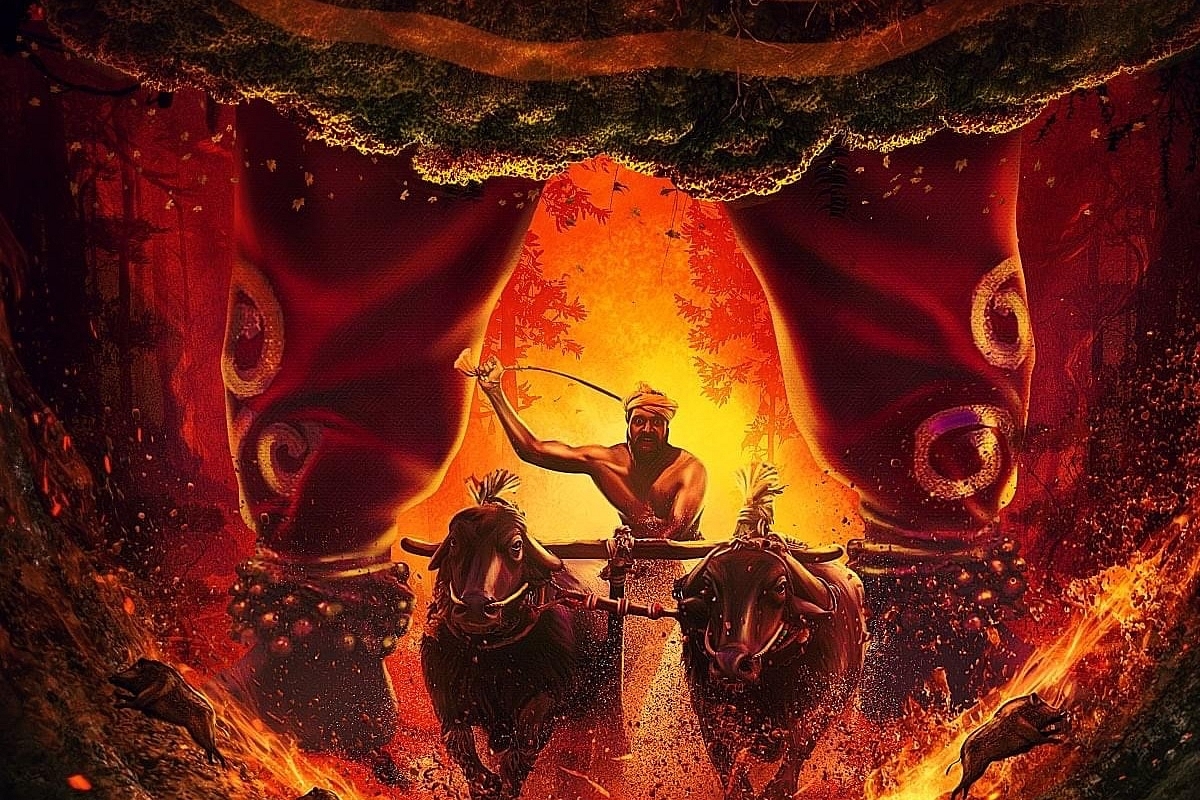Movies
Kantara: Cinematic Excellence Both In Spirit And In Form
- The beauty and grandeur with which the spirit worship tradition has been portrayed both through the storytelling and the captivating cinematography truly deserves applause.

Kantara movie review
Kannada films are reclaiming their place among world class cinema and the latest to join the wagon of film-making that is a visual delight, a cultural treatise and an engrossing tale of folk thought meets contemporary truth is Kantara.
A gripping tale of the battle for ‘dharma’ and how it chooses its warriors no matter how hard they try to defy destiny’s attempts at reminding them of their role in the scheme of things.
More importantly, it unapologetically and aesthetically portrays tradition as truth and not, as is popularly and conveniently done often, as a ‘myth’.
Actor, director Rishab Shetty’s Kantara is a tale set in his homeland coastal Karnataka that looks at how greed eventually does take everything down and truth finds its glorious pedestal, irrespective of how powerful be the forces against it.
‘Once upon a time’…like most of our folktales begin…so does the film.
The central theme and the backstory, with which the film begins, is of the legend of how a ‘daiva’, the deity worshipped in the tradition of spirit worship or bhootaradhane that is indigenous to coastal Karnataka, appeared as an answer to a king’s life quest and in return sought the stretch of forest as land grant for its inhabitants.
The film then traces the journey of tradition versus human weaknesses especially greed, tradition versus laws which may be right in intent but are often detrimental to existing ways of social life and living.
It is also a nuanced expression of the internal battle between being a bearer of tradition versus avoiding it for the fear of what it may bring, owing to a past experience one associates with it.
Shiva the protaganist played by Rishabh Shetty who is also the director of the film, plays the character of a rural macho youth who works at the house of a landlord also running his buffalo bulls for Kambala.
Shiva’s fight for ‘dharma’ which translates as ‘being just, right, true’ in its widest sense is the constant in the film.
He fights for the medal which rightly belongs to him, he fights for his people to whom the forests belong, he fights for his brother who has been wronged and killed.
But his fight, like the character sketch and the humour of the film are very rustic, organic and do not have an air that makes it feel scripted. It is very natural.
The humour is often cheeky and suggestive at places but none out of place or forced. It adds to the character description and the equations between them.
Kishore, as the cop and the main antagonist, is once again at his subtle best. Those who have watched the Netflix production She, will see its ‘nayak’ in an even stronger role.
The female lead Saptami Gowda plays his love interest Leela is a newly trained forest officer who is torn between tradition and duty. While those that would like to find flaws and associate her ‘sexualisation’ and the ‘male gaze’ as being ‘objectification’, can do so, but none of it is brash or diluting the strength of her character.
The sketch of women characters in fact, is subtle and strong - be it Leela, or Shiva’s mother or the landlord’s submissive wife Anammakka.
Leela’s struggles, her argument, the stand she takes at various turn-points and the justification she gives each time, augment her character. She is anything but just a masala element added for the purpose of commercial viability of the story.
There is no attempt to be holier than thou or paint any socio-economic reality with the brush of any agenda.
The film maker isn’t sermonising or demonising and that is what enhances the ease with which the audience can accept the characters. The relatability quotient is a result of it being that close to being real.
The film is also a statement about the industry and its world-view. Especially, given that we have a large industry in our country whose ‘celebrities’ take turns to pose as selectively concerned activists at this time of the year.
The director here, through the hero, tells the forest cop who stops the community from bursting the ‘garnal’ or crude firecracker during a kola and threatens to stop all the ‘sampradaya’, “ninna appanige huttidavanadre nillisi torisa” (try if you are born to your father) - not out of arrogance, but out of sheer spine to save a harmless practice being severed at the alter of regulations.
And the beauty and grandeur with which the spirit worship tradition has been portrayed both through the storytelling and the captivating cinematography truly deserves applause.
The one at the edit table too has ensured it is slick, rightly paced and rarely any frame pointless.
I am tempted to but will refrain from divulging the details of the tale, lest it be a spoiler. The climax has left every audience member awe-struck, and received rave reviews from various contemporary southern Indian stars who watched it.
The film is a treat to the eyes and ears and the team sure can take a bow for creating a fine piece of cinema, that without trying too hard tells a fantastic ‘anecdotal’ tale of tradition.
Introducing ElectionsHQ + 50 Ground Reports Project
The 2024 elections might seem easy to guess, but there are some important questions that shouldn't be missed.
Do freebies still sway voters? Do people prioritise infrastructure when voting? How will Punjab vote?
The answers to these questions provide great insights into where we, as a country, are headed in the years to come.
Swarajya is starting a project with an aim to do 50 solid ground stories and a smart commentary service on WhatsApp, a one-of-a-kind. We'd love your support during this election season.
Click below to contribute.
Latest